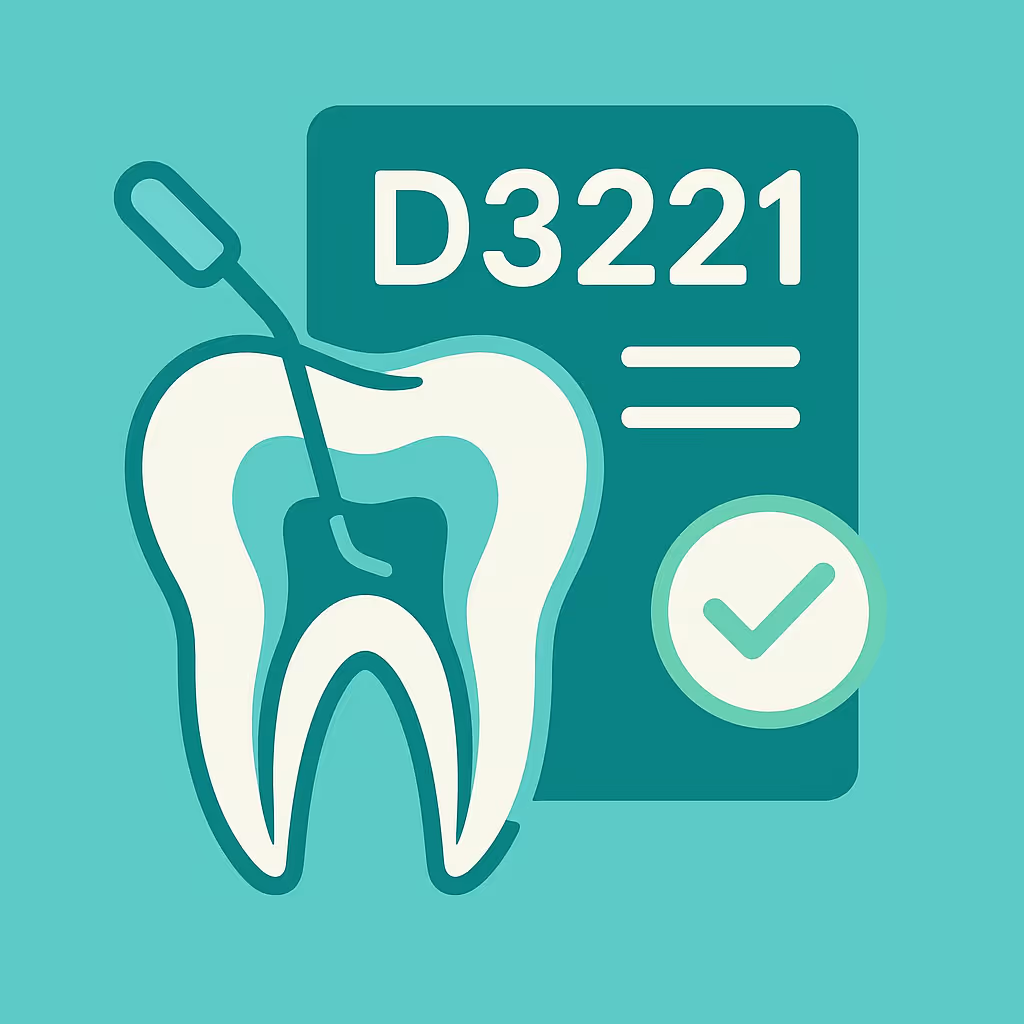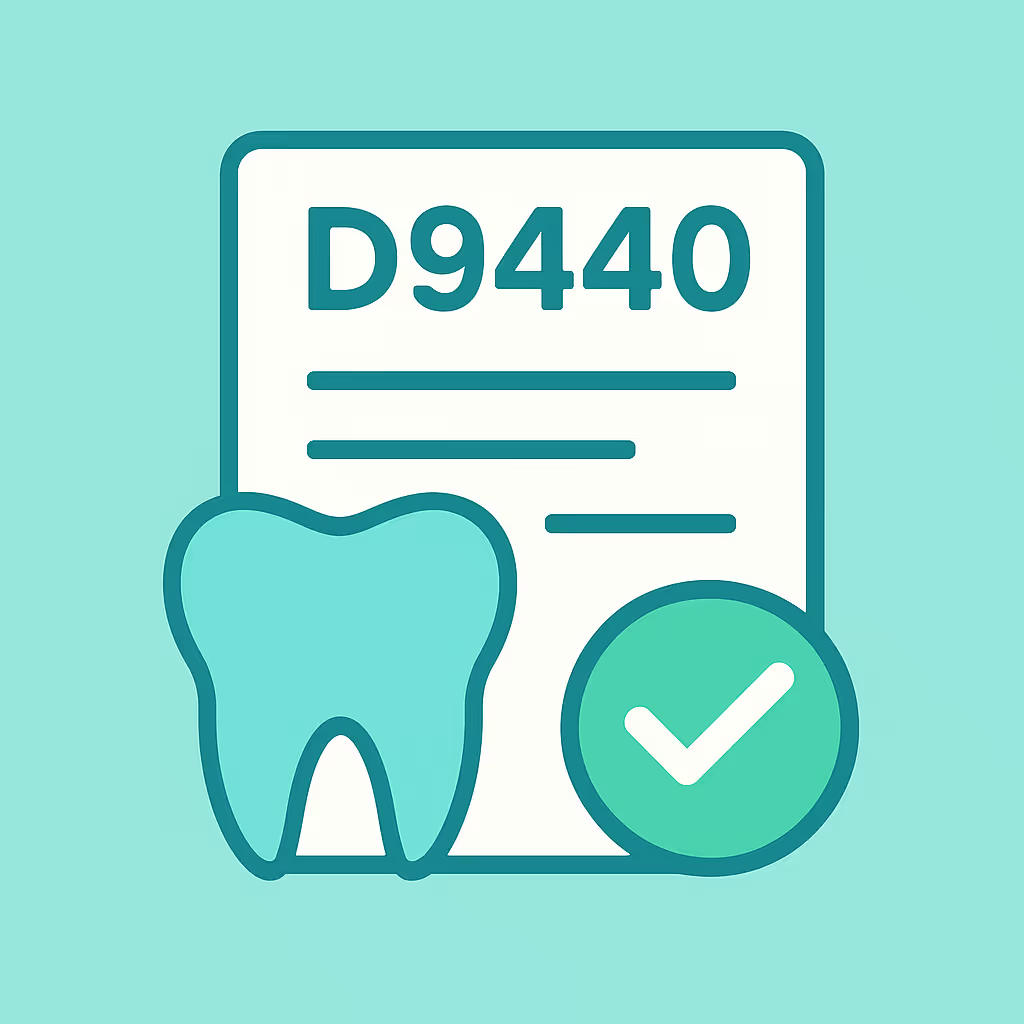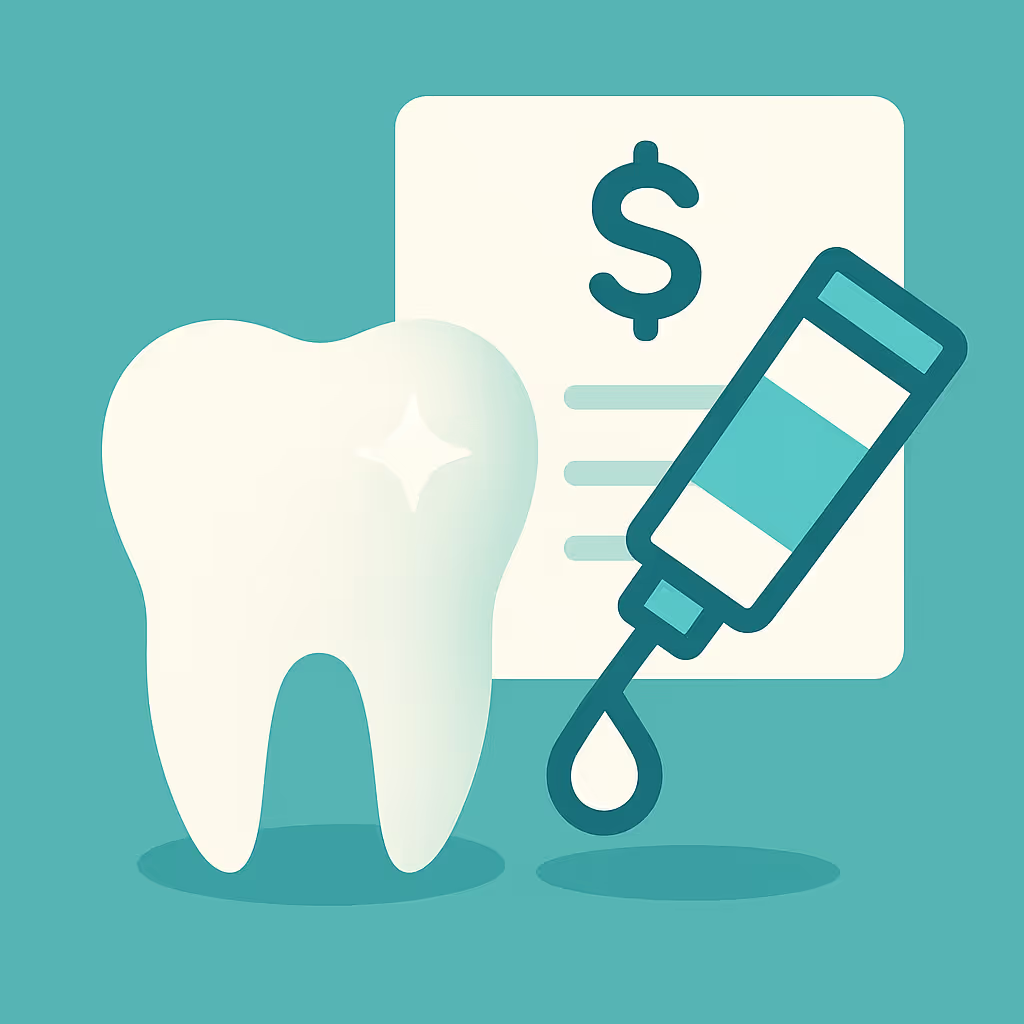Understanding Dental Code D1354
The D1354 dental code, defined as "interim caries arresting medicament application – per tooth," is a valuable tool for dental practices aiming to manage carious lesions non-invasively. Knowing when and how to use this code can improve patient care, streamline billing, and optimize insurance reimbursement. This article provides practical guidance for dental teams on the correct use, documentation, and billing of D1354.
When to Use D1354 dental code
D1354 is used when a medicament, such as silver diamine fluoride (SDF), is applied to a carious lesion to halt its progression. This code is appropriate for primary and permanent teeth in patients where traditional restorative treatment is not feasible or needs to be delayed. Common scenarios include:
- Pediatric patients with early childhood caries who cannot tolerate restorative procedures.
- Patients with special healthcare needs or behavioral challenges.
- Geriatric patients with root caries or limited access to care.
- Situations where medical or financial factors delay definitive treatment.
It is important to note that D1354 is billed per tooth, not per surface or per visit. Each application to a separate tooth should be documented and billed accordingly.
Documentation and Clinical Scenarios
Accurate documentation is essential for claim approval and continuity of care. Best practices include:
- Charting: Record the tooth number, surface(s) affected, and the presence of an active carious lesion.
- Medicament Used: Specify the product (e.g., SDF 38%) and amount applied.
- Rationale: Document the clinical reason for choosing D1354, such as patient age, medical status, or behavioral considerations.
- Consent: Obtain and note informed consent, especially regarding potential side effects like staining.
- Follow-Up Plan: Outline recall interval and monitoring strategy.
Example scenario: A 4-year-old with multiple carious lesions who is unable to cooperate for restorative care may receive SDF on affected teeth, with D1354 billed for each treated tooth.
Insurance Billing Tips
Insurance reimbursement for D1354 varies by plan and state. To maximize claim success:
- Verify Coverage: Check eligibility and benefits before treatment. Some plans require pre-authorization or limit D1354 to specific age groups or tooth types.
- Submit Clear Documentation: Attach clinical notes, intraoral photos, and radiographs when submitting claims. This supports medical necessity and reduces denials.
- Use Correct Coding: Do not bundle D1354 with other procedures. If a restoration is placed at a later date, use the appropriate restorative code (composite restoration code, for example) for that service.
- Track EOBs and AR: Monitor explanation of benefits (EOBs) and accounts receivable (AR) to identify underpayments or denials promptly. Appeal claims with detailed supporting documentation if necessary.
Staying current with payer policies and CDT code updates is key to maintaining compliance and revenue integrity.
Example Case for D1354
Consider a 70-year-old patient with root caries on teeth #22 and #23 who is medically compromised and not a candidate for immediate restorative care. The dentist applies SDF to both teeth and documents the procedure, rationale, and follow-up plan. The office bills D1354 for each tooth, submits supporting clinical notes and photos, and confirms coverage with the patient’s insurance. The claim is approved, and the patient is scheduled for a recall visit to reassess the lesions.
This real-world example highlights the importance of proper code selection, thorough documentation, and proactive insurance communication when using D1354.





